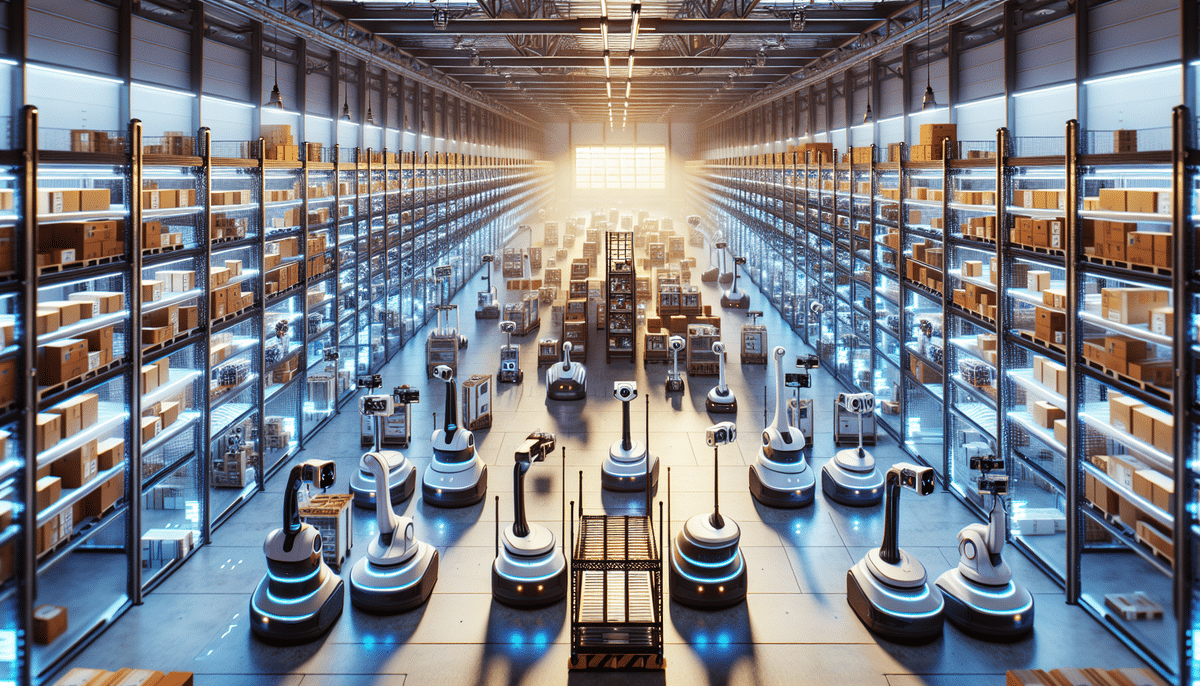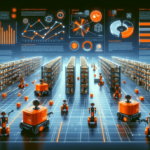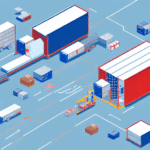Introduction to Warehouse Robotics: Kiva Systems vs. Geek+
In the realm of warehousing, technological innovation is paramount, and e-commerce giant Amazon has been a leader in this space. Amazon Robotics, formerly known as Kiva Systems, revolutionized warehouse operations by introducing automated robots. Recently, Geek+, a Chinese robotics company founded in 2015, has emerged as a strong competitor, offering versatile and customizable solutions. This article provides an in-depth comparison of Kiva Systems and Geek+, analyzing their features, capabilities, costs, and user experiences to help you make an informed decision for your business.
History and Evolution of Kiva Systems and Geek+
Kiva Systems: From Startup to Amazon Acquisition
Kiva Systems was established in 2003 and swiftly gained traction in the warehousing sector. Initially, their robots were utilized in the medical industry to transport supplies. Amazon's acquisition of Kiva Systems in 2012 marked a significant shift, transforming it into Amazon Robotics. This partnership accelerated the development of advanced robotic solutions, enabling Amazon to optimize its vast warehouse network worldwide.
Geek+: Rapid Growth in the Robotics Industry
Founded in 2015, Geek+ quickly positioned itself as a formidable player in the warehouse robotics market. Starting with autonomous forklifts, Geek+ expanded its product lineup to include robotic picking, sorting, and inventory tracking systems. By leveraging advancements in artificial intelligence and machine learning, Geek+ has enhanced the adaptability and efficiency of its robots, particularly excelling in the competitive Asian markets.
Features and Technical Comparison
Key Features of Kiva Systems
- Automated Shelf Transport: Kiva robots move entire shelves to human pickers, minimizing the need for human labor.
- Optimized Inventory Management: Proprietary software ensures real-time inventory tracking and efficient robot movement.
- Safety Enhancements: Equipped with sensors and emergency stop buttons to ensure the safety of warehouse workers.
Key Features of Geek+
- Lidar Navigation: Utilizes Lidar technology for real-time navigation and obstacle detection.
- Collaborative Robotics: Multiple Geek+ robots work together to complete tasks, enhancing flexibility.
- AI and Machine Learning: Advanced algorithms enable robots to learn and adapt to dynamic warehouse environments.
Technical Specifications Comparison
| Specification | Kiva Systems | Geek+ |
|---|---|---|
| Load Capacity | Up to 3,500 lbs | Up to 1,100 lbs |
| Speed | 0.8 m/s | 1 m/s |
| Software | Proprietary | Open-source |
| Charging Method | On-the-go charging | On-the-go charging |
Both systems offer robust capabilities, but Geek+ provides greater customization through its open-source software, while Kiva Systems boasts higher load capacities and longer market presence.
Cost Analysis: Upfront and Ongoing Expenses
Understanding the cost structure is crucial when choosing between Kiva Systems and Geek+. Kiva Systems typically requires a higher initial investment for their robots but offsets this with lower ongoing maintenance costs. In contrast, Geek+ offers a more affordable upfront price but incurs higher maintenance expenses over time. According to a McKinsey report, the total cost of ownership should be evaluated based on your warehouse's specific needs and budget constraints.
Impact on the E-commerce Industry and Warehouse Operations
Enhancing Efficiency and Reducing Labor Costs
Kiva Systems and Geek+ have significantly transformed warehouse operations by automating repetitive and labor-intensive tasks. This automation has led to increased order processing speeds and reduced error rates, enabling companies like Amazon to handle millions of orders efficiently.
Improving Worker Safety and Satisfaction
By minimizing the need for workers to perform physically demanding tasks, both systems have improved workplace safety. Employees can focus on more complex and intellectually stimulating tasks, which enhances job satisfaction and reduces turnover rates.
A Deloitte study highlights that automation in warehouses not only boosts productivity but also contributes to a safer and more fulfilling work environment.
Real-World Case Studies
Amazon's Implementation of Kiva Systems
Amazon has integrated Kiva Systems extensively across its global warehouse network. The introduction of Kiva robots has enabled Amazon to process orders faster, reduce fulfillment times, and maintain high accuracy levels. This scalability is a testament to Kiva Systems' effectiveness in large-scale operations.
SMEG's Adoption of Geek+ Robotics
Italian appliance manufacturer SMEG has implemented Geek+ robots in its warehouses to streamline order processing. The use of Geek+ robots has led to a significant increase in order handling capacity and a reduction in operational costs, demonstrating Geek+'s versatility in diverse industrial settings.
Future Prospects in the Robotics Market
The future looks promising for both Kiva Systems and Geek+. As the demand for e-commerce and efficient logistics continues to grow, the need for advanced warehouse automation solutions will intensify. Forbes predicts that the warehouse robotics market will expand significantly, driven by innovations in AI, machine learning, and IoT integration. Both companies are well-positioned to lead this growth, with ongoing investments in technology and expanding their global footprints.
Advantages and Disadvantages of Kiva Systems vs. Geek+
Kiva Systems: Pros and Cons
- Advantages: High load capacity, proven track record, strong integration with Amazon's ecosystem.
- Disadvantages: Higher initial cost, less flexibility due to proprietary software.
Geek+: Pros and Cons
- Advantages: Lower upfront costs, high flexibility and customization, advanced AI capabilities.
- Disadvantages: Lower load capacity, higher ongoing maintenance costs, newer market entrant.
Choosing between the two depends on your specific operational needs, budget, and the level of customization required.
User Reviews and Experiences
Users of both Kiva Systems and Geek+ commend the increased efficiency and accuracy brought by these robotic solutions. Amazon's implementation of Kiva Systems is often highlighted for its seamless integration and reliability. Conversely, Geek+ users appreciate the customization options and advanced navigation capabilities. However, some users have reported technical challenges and the need for substantial support during the initial integration phase.
According to TrustRadius, the overall satisfaction ratings for both systems are high, with Kiva Systems slightly ahead in terms of reliability, while Geek+ excels in flexibility and innovation.
Integrating Robotic Systems into Your Business Operations
Steps for Successful Integration
- Assess Your Needs: Evaluate your warehouse size, inventory types, and operational challenges.
- Choose the Right System: Based on your assessment, decide whether Kiva Systems or Geek+ aligns better with your requirements.
- Plan the Implementation: Develop a detailed integration plan, including timelines, training, and support.
- Monitor and Optimize: Continuously monitor the performance of the robotic systems and make necessary adjustments.
Factors to Consider When Choosing a Robotic System
- Scalability: Ensure the system can grow with your business needs.
- Compatibility: The system should integrate seamlessly with your existing warehouse management software.
- Cost of Ownership: Consider both initial and ongoing costs to determine long-term affordability.
- Support and Maintenance: Reliable customer support and maintenance services are crucial for uninterrupted operations.
Conclusion
The integration of advanced robotics like Kiva Systems and Geek+ is transforming the warehousing and e-commerce industries. Kiva Systems offers robust, high-capacity solutions with a proven track record, making it ideal for large-scale operations. On the other hand, Geek+ provides flexible and customizable options, suitable for businesses seeking adaptability and innovation. By carefully evaluating your warehouse needs, budget, and operational goals, you can select the robotic system that best enhances your efficiency, reduces costs, and supports your business growth in an increasingly competitive market.






















